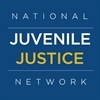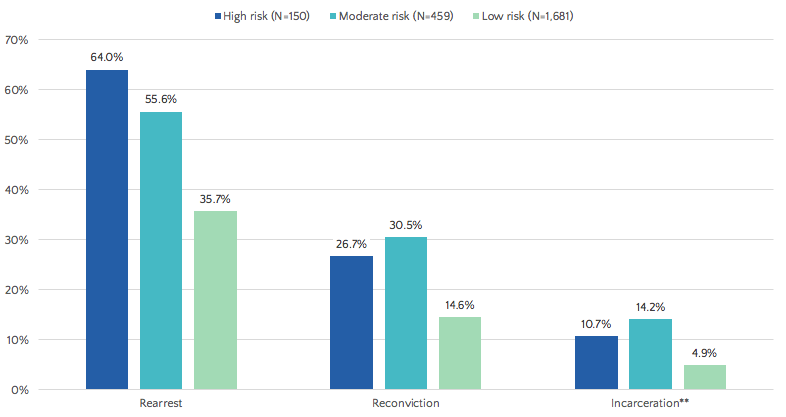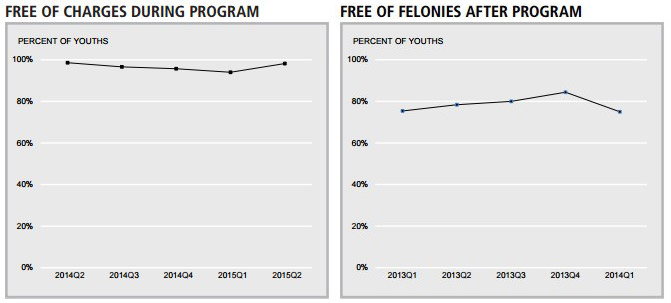Progressive recidivism data
As illustrated in table above, state level recidivism reports vary widely in the populations, marker events, and other details included in their analyses. Given the complexities involved in measuring recidivism, most published reports include only one population and one marker event as additional details often require additional data sources and other resources. However, there are a few examples of progressive recidivism research which include multiple populations and marker events and/or include more comprehensive analyses.
Click a state to see a summary of its policies and more information.
I Florida
The Florida Department of Juvenile Justice publishes an annual Comprehensive Accountability Report (CAR) which includes recidivism rates for various populations including civil citation and diversion releases, community programs (probation, day treatment, post commitment services) and residential programs. One unique feature of the report is that recidivism rates are based only on those that successfully completed the program or service. Like Virginia, Florida reports on offending while under supervision or in placement separate from offending after service completion.
| Program area | Total releases | Total completions | % Completions | % Any ODS | % Recidivism |
|---|
| Diversion services |
14,543 |
12,578 |
86% |
NA |
13% |
| Probation services - state operated |
12,672 |
9,514 |
75% |
33% |
15% |
| Probation/CBIS services - provider operated |
64 |
22 |
34% |
48% |
36% |
| Probation enhancement services |
1,388 |
909 |
65% |
21% |
18% |
| Day treatment and minimum risk commitment programs |
1,202 |
751 |
62% |
38% |
32% |
| Redirection programs |
920 |
626 |
68% |
27% |
31% |
| Post commitment - redirection services |
175 |
108 |
62% |
26% |
39% |
| Post commitment services - state operated |
2,199 |
1,376 |
63% |
28% |
19% |
| Post commitment services - provider operated |
347 |
159 |
46% |
25% |
39% |
| Post commitment - transition services |
565 |
244 |
43% |
30% |
19% |
| Probation and community intervention total |
37,075 |
26,287 |
77% |
19% |
15% |
Report excerpt, 2014–15 Comprehensive Accountability Report: Probation Services (p. 8).
T Maryland
The Maryland Department of Juvenile Services produces an annual Data Resource Guide which includes a chapter on recidivism. The report includes recidivism rates for probation and committed populations and measures multiple marker events including juvenile and adult arrests, adjudication/conviction, and commitment/incarceration. The report also includes analyses of recidivism rates by risk level and program type (group home, independent living, state operated, etc).
12-month juvenile and/or criminal justice recidivism rates by risk level*, FY 2014 new probation youth**
*There were 49 youth out of 2,339 who did not have MCASP risk levels. Percentages are calculated excluding these missing values.
**Youth with a high risk level had higher rearrest rates, though consideration needs to be given to the smaller number of youth with a high risk. At reconviction and incarceration, youth with moderate risk levels had the highest recidivism rates.
Report excerpt, 2015 Data Resource Guide (p. 187).
l Pennsylvania
Pennsylvania’s Juvenile Court Judges Commission publishes comprehensive recidivism data on a broad cohort of juveniles who have had juvenile court cases closed in a given year. This report is fairly unique in that it includes analyses detailing family status (married, divorced, deceased) and separate analyses of sex offender and serious, violent, chronic, and child offender populations.
Family status of recidivists*: Juveniles with cases closed in 2007, 2008, 2009, or 2010
| | 2007 | 2008 | 2009 | 2010 | Four-year total |
|---|
| Family Status | Number of recidivists | Percentage of recidivist population | Number of recidivists | Percentage of recidivist population | Number of recidivists | Percentage of recidivist population | Number of recidivists | Percentage of recidivist population | Number of recidivists | Percentage of recidivist population |
|---|
| Parents never married |
1388 |
43% |
1656 |
47% |
1870 |
49% |
1561 |
48% |
6475 |
47% |
| Separated/divorced |
969 |
30% |
934 |
26% |
940 |
25% |
856 |
26% |
3699 |
27% |
| Married |
692 |
21% |
697 |
20% |
706 |
19% |
583 |
18% |
2678 |
19% |
| One/both parents deceased |
207 |
6% |
248 |
7% |
273 |
7% |
244 |
8% |
972 |
7% |
| Total |
3256 |
|
3535 |
|
3789 |
|
3244 |
|
13824 |
|
*The family status of 569 recidivists with a case closed in 2007, 252 juveniles with a case closed in 2008, 417 juveniles with a case closed in 2009, and 380 juveniles with a case closed in 2010 was not reported in the PaJCMS.
Report excerpt, The Pennsylvania Juvenile Justice Recidivism Report: Juveniles with Cases Closed in 2007, 2008, 2009, or 2010 (p. 62).
r Utah
The Utah Division of Juvenile Services publishes an annual report which includes performance measures for the various delinquency services provided by the Division. The report includes performance measures for diversion and work program populations as well as youth in residential programs. Utah’s report is unique in that it is one of a few examples of reports which present a success rate, or a measure of youth who did not reoffend, both during and after completion of a program or service.
s Virginia
The Virginia Department of Juvenile Justice publishes an annual Data Resource Guide which includes a chapter on recidivism. The report includes measures of recidivism for numerous populations including probation placements, probation releases, direct-care releases, parole placements, and parole releases. Recidivism is measured by multiple marker events including rearrest, reconviction, and reincarceration. Virginia is one of the few states that report recidivism measures for youth while under probation/parole supervision in addition to after supervision is complete.
Probation placements and probation releases in FY2010–2014, tracked through FY 2015*
| |
Probation placements |
Probation releases |
| |
2010 |
2011 |
2012 |
2013 |
2014 |
2015 |
2016 |
2017 |
2018 |
2019 |
| Rearrest |
37.7% |
35.7% |
37.2% |
34.1% |
34.2% |
34.4% |
33.3% |
34.6% |
33.2% |
32.0% |
| Reconviction |
27.0% |
26.2% |
26.4% |
23.7% |
N/A |
26.8% |
26.8% |
27.6% |
26.3% |
N/A |
| Total |
5,513 |
5,612 |
5,355 |
4,974 |
4,757 |
5,426 |
5,668 |
5,468 |
5,237 |
4,990 |
*Reincarceration rates for probation placements and probation releases are not applicable because, by definition, a juvenile must be committed before being reincarcerated.
Report excerpt, 2015 Data Resource Guide (p. 56).







